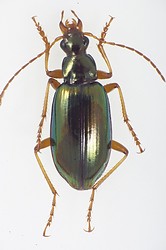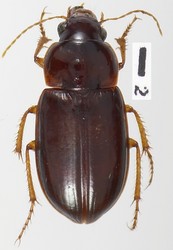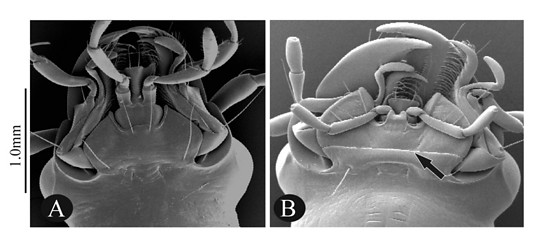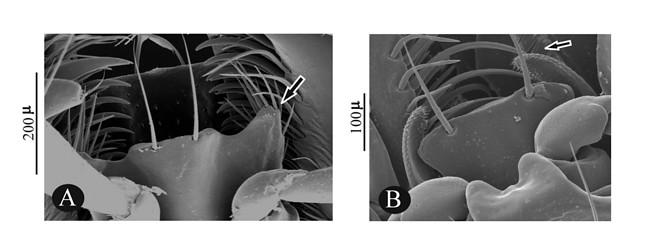Metiini
Kipling Will


This tree diagram shows the relationships between several groups of organisms.
The root of the current tree connects the organisms featured in this tree to their containing group and the rest of the Tree of Life. The basal branching point in the tree represents the ancestor of the other groups in the tree. This ancestor diversified over time into several descendent subgroups, which are represented as internal nodes and terminal taxa to the right.

You can click on the root to travel down the Tree of Life all the way to the root of all Life, and you can click on the names of descendent subgroups to travel up the Tree of Life all the way to individual species.
For more information on ToL tree formatting, please see Interpreting the Tree or Classification. To learn more about phylogenetic trees, please visit our Phylogenetic Biology pages.
close boxIntroduction
This group is restricted to southern South America where they are frequently one of the most abundant groups of ground beetles. They have several extremely different body forms with Abropus being very platynine-like and most Metius are very harpaline-like. Most Metius are heavily-built ground dwelling species, while Abropus is commonly found on the ground and climbing on vegetation.Characteristics
All metiines share the absence (Fig A.) of the suture between the mentum and submentum, which is present in other pterostichines (Fig. B).All members except Feroniola species have setose paraglossae (Fig. A), while the more common condition in pterostichites is glabrous (Fig. B).
Discussion of Phylogenetic Relationships
DNA sequence data place this group as sister to the Notonomus series (K.Will unpublished).Title Illustrations

| Scientific Name | Abropus carnifex |
|---|---|
| Specimen Condition | Dead Specimen |
| Identified By | K.Will |
| Life Cycle Stage | Adult |
| Image Use |
 This media file is licensed under the Creative Commons Attribution License - Version 3.0. This media file is licensed under the Creative Commons Attribution License - Version 3.0.
|
| Copyright |
© Kipling Will

|
| Scientific Name | Antarctiola |
|---|---|
| Specimen Condition | Dead Specimen |
| Life Cycle Stage | Adult |
| Image Use |
 This media file is licensed under the Creative Commons Attribution License - Version 3.0. This media file is licensed under the Creative Commons Attribution License - Version 3.0.
|
| Copyright |
© Kipling Will

|
About This Page
Kipling Will

University of California, Berkeley, California, USA
Correspondence regarding this page should be directed to Kipling Will at
kipwill@berkeley.edu
Page copyright © 2005 Kipling Will
 Page: Tree of Life
Metiini.
Authored by
Kipling Will.
The TEXT of this page is licensed under the
Creative Commons Attribution License - Version 3.0. Note that images and other media
featured on this page are each governed by their own license, and they may or may not be available
for reuse. Click on an image or a media link to access the media data window, which provides the
relevant licensing information. For the general terms and conditions of ToL material reuse and
redistribution, please see the Tree of Life Copyright
Policies.
Page: Tree of Life
Metiini.
Authored by
Kipling Will.
The TEXT of this page is licensed under the
Creative Commons Attribution License - Version 3.0. Note that images and other media
featured on this page are each governed by their own license, and they may or may not be available
for reuse. Click on an image or a media link to access the media data window, which provides the
relevant licensing information. For the general terms and conditions of ToL material reuse and
redistribution, please see the Tree of Life Copyright
Policies.
- First online 07 July 2006
- Content changed 07 July 2006
Citing this page:
Will, Kipling. 2006. Metiini. Version 07 July 2006 (temporary). http://tolweb.org/Metiini/51319/2006.07.07 in The Tree of Life Web Project, http://tolweb.org/











 Go to quick links
Go to quick search
Go to navigation for this section of the ToL site
Go to detailed links for the ToL site
Go to quick links
Go to quick search
Go to navigation for this section of the ToL site
Go to detailed links for the ToL site